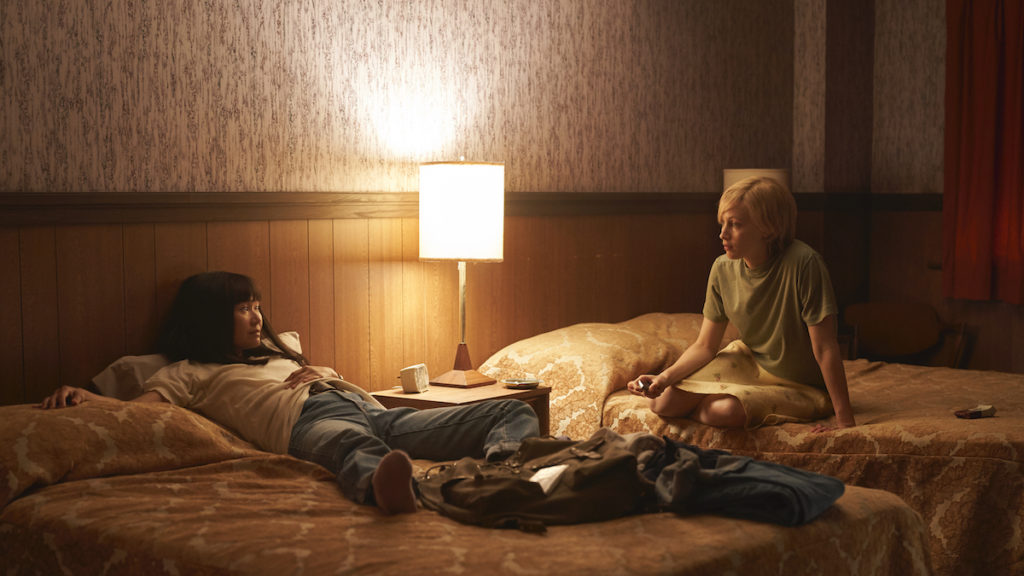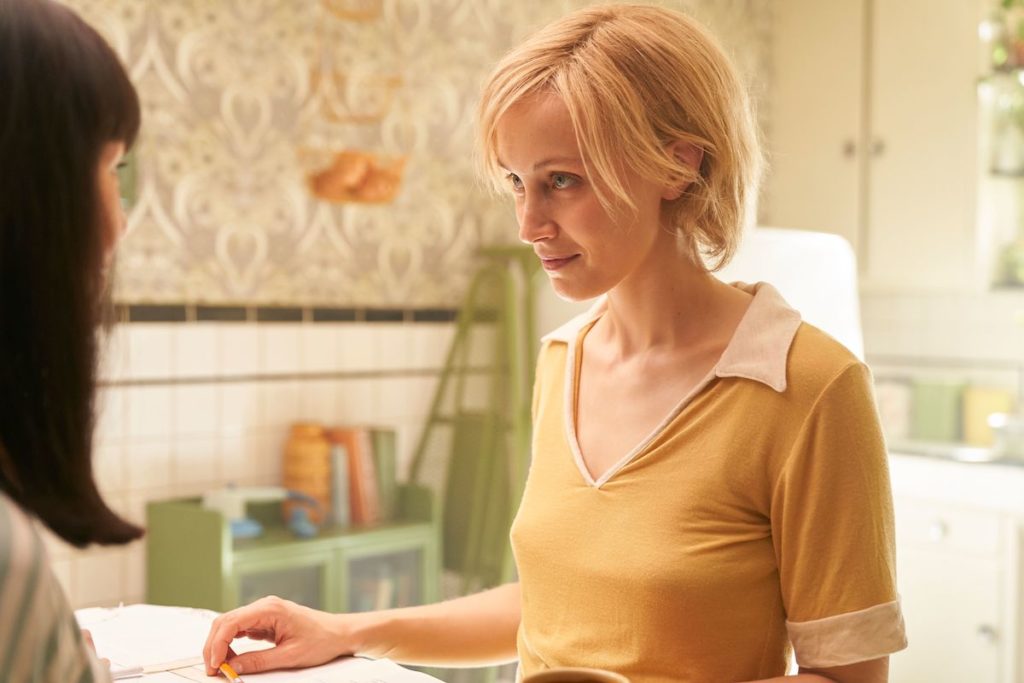By Anne Brodie
You may remember being riveted by the events that unfolded in 1974 as 19-year-old heiress Patty Hearst, granddaughter of newspaper magnate William Randolph Hearst, was kidnapped by terrorist left wing radicals the Symbionese Liberation Army. Kept in a cupboard in the group’s safe house, she reappeared carrying a rifle in an SLA led bank robbery, survived a police shootout and went underground. Sarah Gadon, one of Canada’s most exciting and gifted young actors plays Pauline, a character inspired by Patty Hearst in Semi Chellas’ film, American Woman, based on the novel by Susan Choi. It imagines what may have transpired in her subsequent nine months on the run, from the perspective of her “guard” character based on Wendy Yoshimura. I interviewed Patricia Hearst in 1990 for Jon Water’s film Cry-Baby, so I was excited to speak with Gadon.
Sarah, you’re too young to remember but its surreal seeing today’s civil unrest vs a Republican administration and its institutions, a mirror image of 60s and 70s. Did you research Patty and that time?
I think the more you understand history and how systems of oppression work, the context of the current civil unrest becomes crystal clear. I had the opportunity to do a lot of research before I started shooting. I also love research in general and try to do as much of it as I can as I construct a character. For me, there was a lot to learn about the American political climate of that time, the SLA and I also read every text on Patty Hearst that I could access.
The story has been told many times. What did you want to express in this film, and in your performance that we haven’t seen?
Her story has often been told but almost exclusively through the white male gaze. I was very cognizant of that while I was doing research. I know the story of Patty Hearst was one of the most famous kidnappings of that time and it’s easy to think that the story should only centre around her experience. What I love so much about the book and the film is that in this famous story at the heart of those sensational events, was the story of another woman, Jenny or in real life, Wendy Yoshimura. Her story was marginalized because she wasn’t the prototypical American woman. Film gives us the opportunity to look back at the stories that were never told.

Pauline, an heiress turned armed revolutionary, was abused as a prisoner of war, but stayed. The leader couldn’t possibly fulfill his threats against her family. What do you make of that?
Like Susan Choi and Semi Chellas, I was influenced by the actual story of the SLA and Patty Hearst’s kidnapping. However, the novel and the film are works of fiction. I don’t feel comfortable speaking about my work in this film like it’s an actual account of her life. I don’t know why, but I end up playing a lot of women who have experienced extreme trauma in their lives, so I’ve also spent a good deal of time over the years immersing myself in an understanding of how trauma impacts a person’s psyche. Often people who have experienced trauma exhibit behaviours that don’t seem clear or rational to people on the outside looking in. Often, the characters whom I’ve portrayed experience trauma but don’t have the opportunity to process it, instead they suppress it, and it then permeates their lives in unhealthy ways. In this case, I was able to glean from Patty’s own memoir but also many other texts about trauma and the Stockholm syndrome, which at the time of her kidnaping was not a term in existence.
We follow Pauline kidnapped, compliant with the SLA, an abuse victim, but we never see her lose her strength.
I think that all women are extremely resilient. Pauline learned to adapt in order to survive. It was this very quality that drew me to the character.

Do you think Canadian filmmakers bring new perspectives to American stories?
I think Semi is a dual citizen, perhaps that’s why she felt so at home in this narrative. I think what’s special about her telling this particular story is that Semi and the author of the novel, which this film is based on, Susan Choi, are good friends. I think perhaps this is why she was able to so seamlessly transition this film from page to screen.